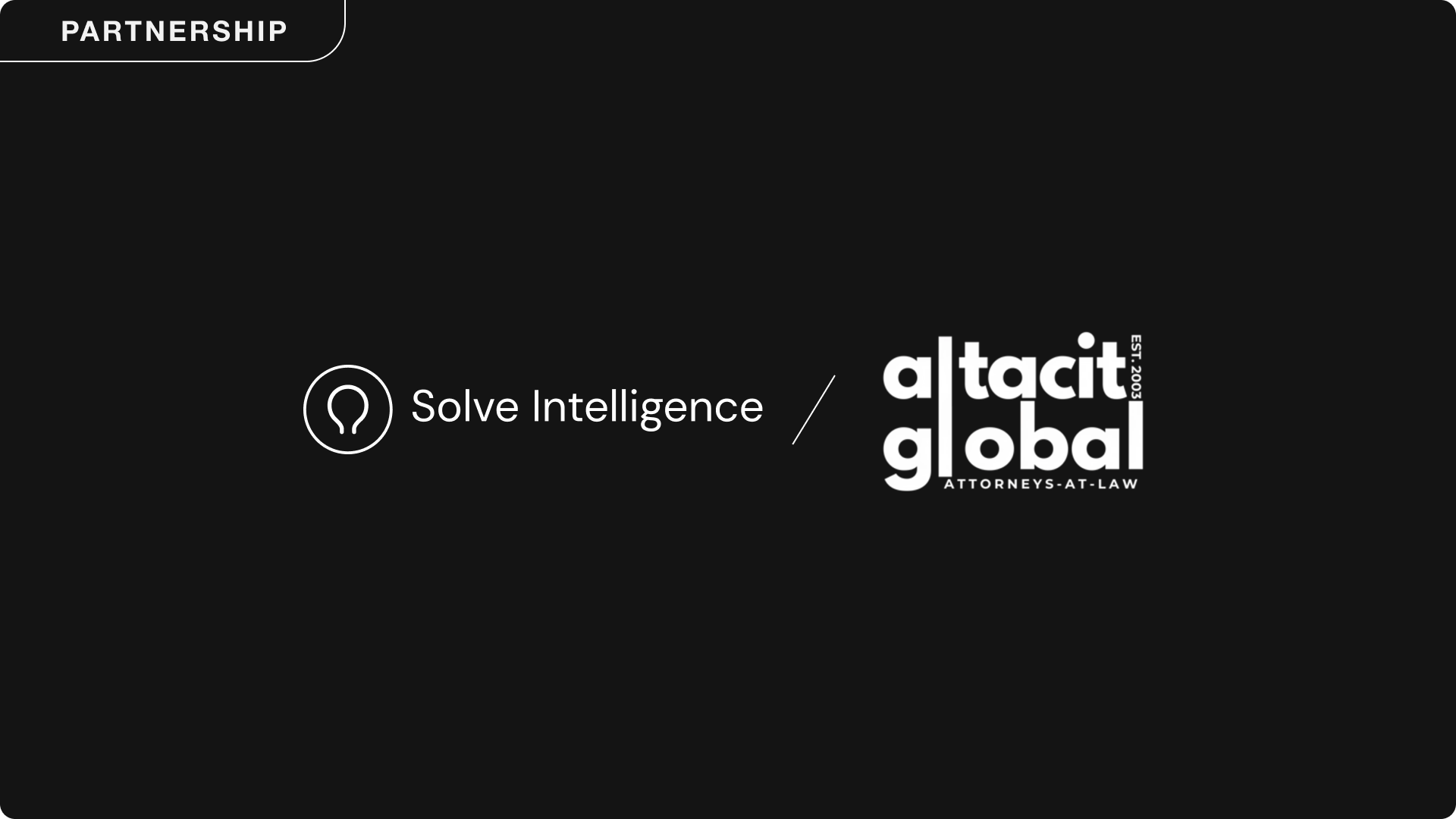The 5 Best Patent Proofreading Software Solutions for Law Firms (2025)
Key Takeaways
- Proofreading software has become essential: Manual checks can’t keep pace with growing patent complexity and filing volumes. AI solutions can help prevent costly errors, office actions, and post-grant risks.
- Most legacy solutions fall short of quality control: Many platforms rely on basic rule-based checks, lack real-time drafting integration, and offer limited jurisdictional support, creating workflow gaps and added manual work.
- Solve Intelligence for AI-assisted patent review: With seamless drafting integration, tracked changes, auto-propagation of edits, and multi-jurisdiction compliance, Solve Intelligence provides unmatched accuracy and efficiency.

Why Patent Proofreading Software Is Essential
Accuracy in patent applications is critical to enforceability and successful prosecution. Minor inconsistencies can lead to office actions, litigation risks, and weakened client trust. As examination standards tighten and filing volumes rise, manual proofreading alone can’t keep up. Today, patent proofreading software has become a strategic necessity, equipping law firms to catch errors early and protect applications from costly challenges.
Advanced proofreading software helps law firms draft efficiently, reduce errors, and maintain consistent quality across jurisdictions. The right tools turn quality assurance from a bottleneck into a competitive advantage. The most effective solutions combine automated error detection, AI-driven analysis, and comprehensive reviews – all integrated seamlessly into existing workflows to support the precision patent drafting and patent prosecution requires.
The 6 Best Patent Proofreading and Review Software Solutions
1. Solve Intelligence
Solve Intelligence is the most comprehensive patent proofreading and review platform available today, integrated as part of a patent drafting solution. Unlike competitors that bolt proofreading onto existing workflows, Solve Intelligence was built from the ground up as an AI solution that seamlessly integrates patent drafting, review, and quality assurance.
Solve provides AI proofreading with tracked changes, advanced verification of specification and invention disclosure support, and multi-jurisdiction drafting for USPTO and EPO compliance. The platform keeps attorneys in control, offering version history and transparent change tracking. Its AI understands legal context, ensuring claims are properly supported. When you update language, Solve automatically suggests consistent edits across the application. This reduces manual cross-checking and helps teams maintain accuracy at scale. By integrating drafting and review, Solve streamlines the entire patent preparation process.
2. LexisNexis PatentOptimizer
PatentOptimizer offers rule-based antecedent basis checking, claim dependency validation, and terminology consistency checking. The platform integrates with LexisNexis research tools and reports errors to the user.
Despite its established track record, PatentOptimizer's limitations become apparent when compared to modern AI-enabled solutions. The platform relies entirely on rule-based checking without any AI-based semantic analysis, missing the contextual understanding that contemporary tools provide.
3. ClaimMaster
ClaimMaster provides antecedent basis validation and claim dependency checking through its Microsoft Word add-in integration. The platform provides reference label and figure numbering validation while offering issue reporting and custom rule configuration.
However, the platform lacks AI assistance and is unable to detect subtle contextual inconsistencies. ClaimMaster is a desktop-only solution that doesn’t provide any cloud-based collaboration/review features.
4. Patent Bots
Patent Bots operates as a cloud-based proofreading service with fast turnaround reporting, typically delivering results quickly. The platform provides basic antecedent basis checking and claim dependency validation through its simple web-based interface with USPTO-focused formatting checks.
Patent Bots provides no integrated editing or drafting capabilities, requiring users to implement suggested changes in separate drafting platforms. The system relies on basic rule-based checking without AI semantic analysis, and cannot propagate changes automatically throughout specifications. Patent Bots' jurisdictional support remains primarily USPTO-focused, lacking the flexibility required for international patent practice.
5. PatentPal
PatentPal functions primarily as a generative drafting tool. The web-based platform provides terminology normalization and template-based document structures across multiple technology fields.
PatentPal's focus on draft generation rather than comprehensive proofreading creates significant gaps in quality assurance capabilities. The platform lacks fundamental proofreading features, including antecedent basis checking and dependency validation, making it unsuitable for thorough patent review. Its limited jurisdictional compliance features cannot adapt to different patent office requirements.
Key Features to Look for in Patent Proofreading Software
The following table provides a comprehensive comparison of the most critical automated proofreading and review capabilities across all major patent software solutions. Each feature is scored 0 (not available), 0.5 (partially available), and 1 (fully implemented):
Analysis of Competitive Scores and Choosing the Right Patent Proofreading Solution
The feature matrix reveals a clear performance hierarchy, with Solve Intelligence achieving a 10/10 score while competitors struggle to deliver comprehensive patent proofreading capabilities. ClaimMaster (5.0/10) offers solid traditional capabilities but lacks essential AI-based features. Both Patent Bots and PatentOptimizer (4.0/10 each) show significant gaps in advanced patent proofreading and AI features, while PatentPal (1.5/10) proves unsuitable for quality assurance workflows.
Why Solve Intelligence Outperforms
Unlike competitors that require multiple tools and manual processes, Solve Intelligence's integrated environment streamlines the entire drafting and review process, reducing errors and increasing productivity. The platform's review functionality to identify issues and implement tracked changes provides transparency and control, eliminating the "black box" problem that undermines confidence in other AI solutions. This keeps attorneys in the driving seat.
Notably, attorneys cannot easily propagate changes automatically across the specification as intuitively through any platform other than Solve Intelligence, often requiring manual updates that increase the potential for errors.
While other tools may excel in narrow areas, only Solve Intelligence delivers the complete patent proofreading excellence that IP-teams require. Solve Intelligence's Patent Drafting Copilot provides advanced patent proofreading and review capabilities helping attorneys to deliver exceptional quality while maximizing efficiency.
AI for patents.
Be 50%+ more productive. Join thousands of legal professionals around the World using Solve’s Patent Copilot™ for drafting, prosecution, invention harvesting, and more.
Frequently Asked Questions
What is Proofreading Software?
Patent proofreading software automatically checks patent drafts for errors such as missing antecedents, inconsistent terminology, missing figure references, and jurisdiction-specific compliance problems. Unlike generic grammar tools, it’s designed for patent documents, ensuring patents are accurately presented before submission to offices like the USPTO or EPO.
Who Can Benefit from Proofreading Software?
Patent attorneys, in-house counsel, patent agents, and paralegals all benefit from proofreading tools. Whether you draft a few patents a year or handle high-volume filings, these solutions save time, reduce manual checking, and improve the overall quality of your applications, helping teams avoid costly errors and rework.
Why Should Law Firms Invest in Proofreading Software?
Proofreading software helps law firms protect client interests by catching issues early, maintaining consistency, and demonstrating diligence. Over time, this not only improves outcomes but also strengthens client trust and operational efficiency.
How can AI improve the accuracy of patent proofreading?
AI solutions go beyond basic rule checks. They analyse language in context, flagging semantic inconsistencies, unsupported claims, and jurisdiction-specific risks. This means AI can detect nuanced errors that manual review or older keyword-based software often misses, delivering more thorough, reliable patent proofreading.




.png)